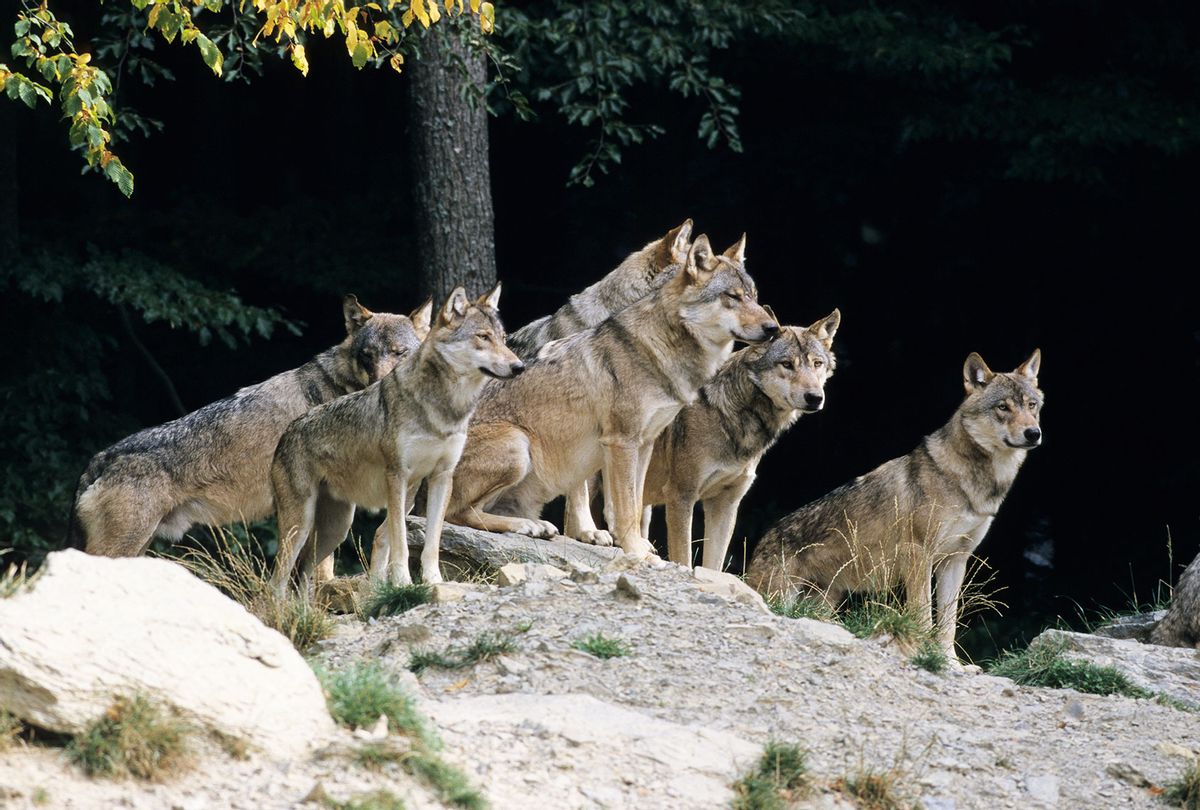When the Earth descended into its most recent ice age, an era known as the Pleistocene, the world's food web was completely disrupted. In that epoch, which began 2.6 million years ago and ended 11,700 years ago, many species went extinct. Yet a few animals quickly and surprisingly adapted to the new weather — though the specifics of who survived, and why, aren't well-understood.
Now, a new study led by the Canadian Museum of Nature homes in one species in particular: wolves. Their work reveals how these apex predators' diets swiftly changed in a few short thousand years. That's practically a blink of an eye, evolutionarily speaking.
According to the study, published in the journal Palaeogeography, Palaeoclimatology, Palaeoecology, wolves' Pleistocene-era diets transitioned from a reliance on horses to a reliance on caribou and moose. Moreover, and unlike other canids, they seem to have continued being hunters and never transitioned to being scavengers.
Researchers analyzed preserved teeth and bones from the skulls of both ancient and modern gray wolves. The ancient wolves studied lived between 50,000 to 26,000 years ago in what is now the Yukon territory of Canada.
"We can study the change in diet by examining wear patterns on the teeth and chemical traces in the wolf bones," paleontologist Zoe Landry, the lead author of the study, said in a press statement. "These can tell us a lot about how the animal ate, and what the animal was eating throughout its life, up until about a few weeks before it died."
Gray wolves are one of the largest predators that survived extinction at the end of the Pleistocene ice age. They can still be found in the forests and tundras of the Yukon, where caribou and moose are still their main sources of food. They also live in warmer climates much further south, including in Oregon and California.
Want more wolf stories in your inbox? Subscribe to Salon's weekly science newsletter The Vulgar Scientist.
The researchers relied on an analysis which required them to examine microscopic wear patterns on the teeth of the skulls. The presence of pits suggested that the wolves were chewing and gnawing on bones, which is indicative of scavenger behavior. The presence of scratch marks suggested that they had been consuming flesh, essentially hunting their prey. Scratch marks were most prevalent, suggesting that the ancient wolves were indeed still hunting rather than scavenging.
But what were they eating? Many horse species went extinct during Pleistocene. In order to dig deeper, the researchers looked at the ratios of carbon and nitrogen isotopes extracted from the collagen in the bones.
"The axiom 'you are what you eat' comes into play here," said Landry.
According to their analysis, horses only accounted for half of the gray wolf diet, while 15 percent of their diet came from Dall's sheep and caribou. There was also some mammoth mixed in. The researchers theorized that the extinction of other large mammals, like short-faced bears and scimitar cats, positioned gray wolves in a good position to transition to hunting new prey.
"This is really a story of ice age survival and adaptation, and the building up of a species towards the modern form in terms of ecological adaptation," said Dr. Grant Zazula, study co-author, in a press statement.
Palaeontologist Dr. Danielle Fraser agreed.
"The gray wolves showed flexibility in adapting to a changing climate and a shift in habitat from a steppe ecosystem to boreal forest," said Fraser in a statement. "And their survival is closely linked to the survival of prey species that they are able to eat."
The researchers concluded that the conservation of caribous will be critical in maintaining a healthy gray wolf population in the modern day.



Shares